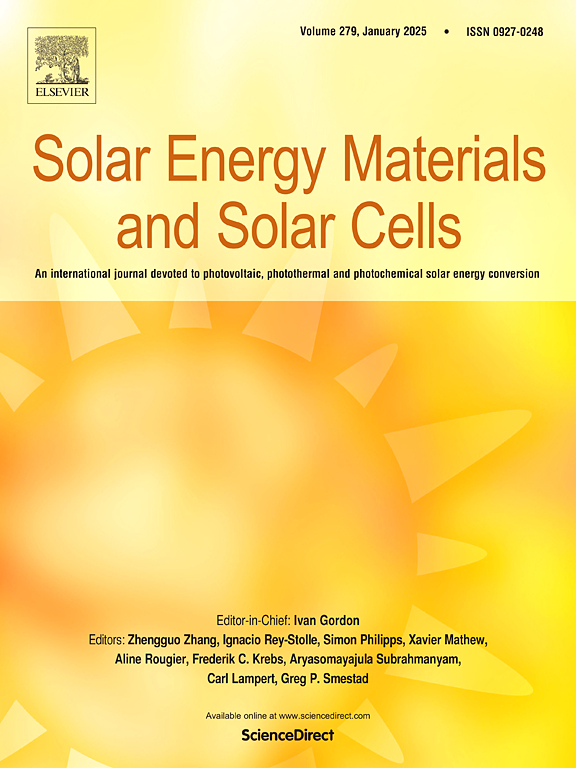Stabilization procedures for TOPCon PV modules after UV-induced degradation
IF 6.3
2区 材料科学
Q2 ENERGY & FUELS
引用次数: 0
Abstract
The study investigates the stabilization behavior of Tunnel Oxide Passivated Contact (TOPCon) photovoltaic (PV) cell technology following UV-induced degradation (UVID). It focuses on the after-effects of lab-induced UVID, particularly the drastic effects of power loss during dark storage after UV irradiation. To counteract these effects, which are considered as artifacts that do not affect the expected outdoor performance, the paper presents light soaking at 25 °C module temperature as reproducible stabilization procedure for module performance measurements. Considering the increasing market presence of TOPCon-based PV modules and recent reports of, in some cases tremendous extent, UVID in the lab, stabilization after UVID is highly relevant. The study further explores the development of degradation during dark storage over time, different conditions for light soaking, as well as the potential of other approaches: While the repeated flashing is in principle applicable for post UVID-stabilization, current injection procedures showed negligible effect. Interestingly, high-temperature treatment reduces the degradation during dark storage. In that, the study offers insights that may inspire cell-level investigations of degradation and stabilization and improve understanding of underlying mechanisms.
uv诱导降解后TOPCon光伏组件的稳定程序
研究了隧道氧化物钝化接触(TOPCon)光伏(PV)电池技术在紫外线诱导降解(UVID)后的稳定行为。它侧重于实验室诱导的UVID的后效,特别是在紫外线照射后的暗储存期间功率损失的剧烈影响。为了抵消这些影响,这些影响被认为是不影响预期室外性能的人为因素,本文提出在25°C模块温度下进行光浸泡,作为模块性能测量的可重复稳定程序。考虑到基于topcon的光伏组件的市场占有率不断增加,以及最近的报告,在某些情况下,在很大程度上,在实验室中进行UVID, UVID后的稳定性是高度相关的。该研究进一步探讨了随着时间的推移,在黑暗储存期间降解的发展,不同的光浸泡条件,以及其他方法的潜力:虽然重复闪光原则上适用于uvid后稳定,但电流注入程序的影响可以忽略不计。有趣的是,高温处理减少了暗储存期间的降解。在这方面,该研究提供的见解可能会激发细胞水平的降解和稳定研究,并提高对潜在机制的理解。
本文章由计算机程序翻译,如有差异,请以英文原文为准。
求助全文
约1分钟内获得全文
求助全文
来源期刊

Solar Energy Materials and Solar Cells
工程技术-材料科学:综合
CiteScore
12.60
自引率
11.60%
发文量
513
审稿时长
47 days
期刊介绍:
Solar Energy Materials & Solar Cells is intended as a vehicle for the dissemination of research results on materials science and technology related to photovoltaic, photothermal and photoelectrochemical solar energy conversion. Materials science is taken in the broadest possible sense and encompasses physics, chemistry, optics, materials fabrication and analysis for all types of materials.
 求助内容:
求助内容: 应助结果提醒方式:
应助结果提醒方式:


